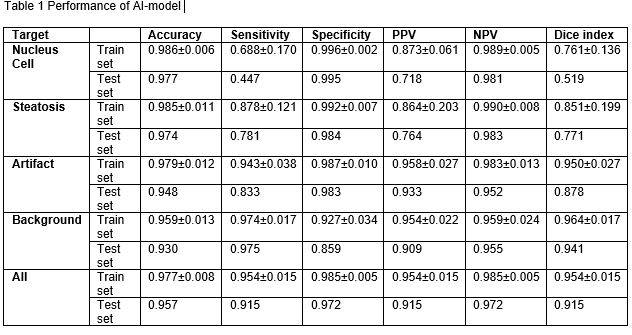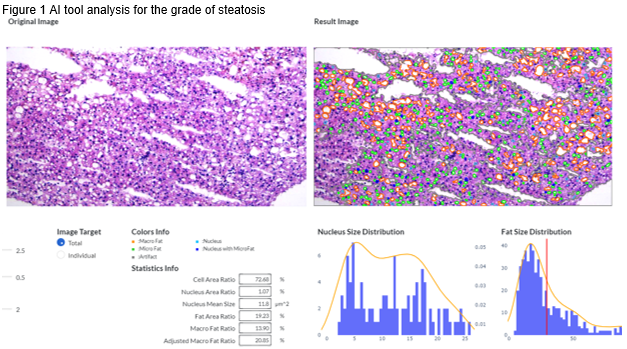Development of a HIPAA compliant cloud based donor liver biopsy share with artificial intelligence technology
Kenji Okumura1,2, Ryosuke Misawa2, Masaru Matsukawa2, Seigo Nishida1,2.
1Surgery, Westchester Medical Center / New York Medical College, Valhalla, NY, United States; 2Procurement teams for New York, Limited, Croton on Hudson, NY, United States
Background: Quality of donor livers is one of the crucial factors for utilization of liver transplantation. As increasing prevalence of obesity, the number of steatotic deceased donor livers continued to rise. It has been estimated that 25% of the discarded donor livers are turned down due to an excess steatosis. The liver biopsy is a gold standard to assess the grades of steatosis. The pathology reading is subjective and lacking the standardization and the assessment report of steatosis has intra- and inter-observer variability. To overcome these limitations, we have developed an objective tool utilizing artificial intelligence (AI) to evaluate steatosis in donor liver biopsies.
Methods: We performed a retrospective analysis from our center on adult deceased donors after brain deaths with liver biopsies. We have developed the model to annotate using the deep learning technology. We manually annotate the training model and develop the final model using deep learning algorithm and image augmentation was also performed to enhance the model. To be able to perform the analysis globally, we develop the secure cloud platform to analyze the biopsy image and the results are able to be shared.
Results: We could annotate the following items using our AI model: nucleus cells, steatosis, background hepatocytes and artifacts. The performance of our AI model has been shown in the table.

Using this new tool, we have safely performed liver transplants using steatotic liver grafts. One notable case was declined by all other centers due to excessive steatosis noted in the pathology report. We utilized this tool, and the analysis indicated 20-30% steatosis, making the graft suitable for liver transplantation.

The intraoperative gross appearance confirmed acceptable steatosis levels, and we successfully performed the liver transplant with excellent graft function.
Conclusion: We have successfully created the secure cloud platform to analyze the liver steatosis. This tool could be useful tool for the OPO and transplant centers in the process of donor evaluation.
[1] Artificial Intelligence
[2] Steatosis
[3] Liver Biopsy